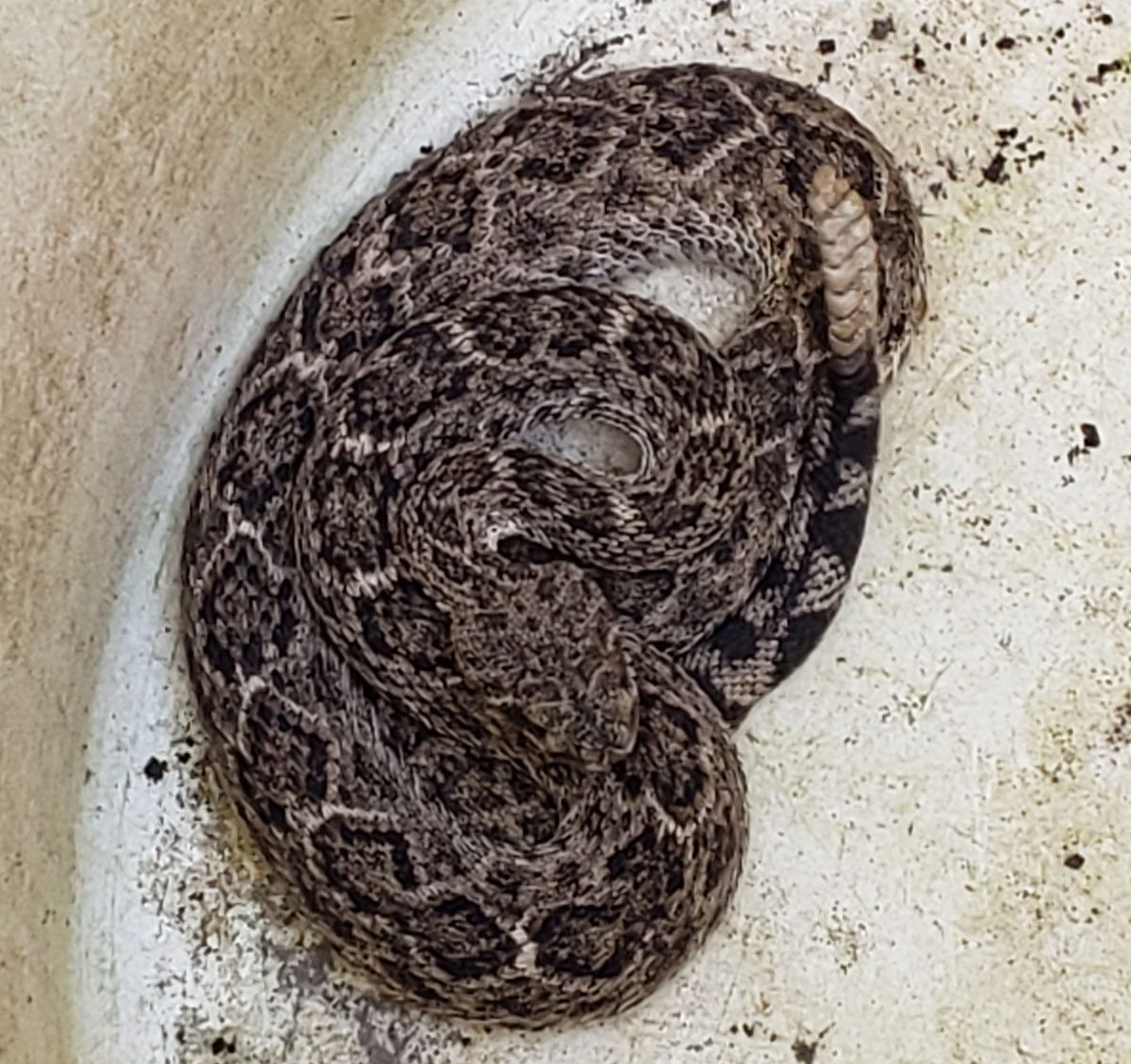Photo: A male Western Diamondback Rattlesnake (Crotalus atrox) in a barrel after being captured in our backyard.
The sure-fire indicator of the beginning of summer on the farm happened March 27th this year. This was a full month earlier than last year. For comparison, read my blog from last year, noting the date:
https://goliadfarms.com/signs-of-summer-on-the-farm/
This time, the dogs and I made our noon commute from the greenhouses to our house for lunch, a grueling 130-meter (roughly the same in yards) trek. Upon entering the backyard, Maya (our female German Shepherd Dog) alerted me she’d found a venomous snake. Our dogs have a distinctive reaction to venomous snakes that is very different from their reaction to non-venomous ones. I retrieved our snake stick from the house (Susie doesn’t allow me to catch poisonous snakes by hand since a 2004 rattlesnake event). The snake, a Western Diamondback Rattlesnake (Crotalus atrox) was buzzing away in a clump of perennials. It wasn’t hard to find; I just followed the buzz. Sighting the snake, I snagged it with the snake stick and called Susie out to secure the snake while I got a 55-gallon plastic drum in which to place it (my 11th grade English teacher would be proud of that construction!). Susie reluctantly held the snake with the stick on our trampoline while I got the barrel. Returning, I took over responsibility for the snake from the very relieved Susie and transferred it into the barrel. After loading the barrel into our fish delivery van, the dogs and I drove to our east pasture to release the snake near a large pecan tree (a tree involved in the aforementioned 2004 rattlesnake event). We usually don’t relocate rattlesnakes unless they are in the yard or near the greenhouses. Instead, we typically walk around them and let them feast on our copious mice population.
Later that afternoon, another indicator of the arrival of summer was found. A very gravid (think pregnant) Sceloporus olivaceous (Texas spiny lizard) was sitting on a branch. I caught her for photographs and then placed her on Fraxinus velutina (Arizona ash tree) to show off her camouflage. The fact she was ready to lay eggs indicated summer had begun.


These two indicators predict an early, long, hot summer on the farm. That’s not too surprising since we had another mild winter. After an early cold snap in November during which we reached 32°F (0°C) for about an hour one morning, the winter was mild. Then in early March we had another cold snap with a predicted freeze that didn’t materialize. That was a good thing since our dewberries (Rubus trivialis), agarita (Mahonia trifoliolata), and many wildflowers were all blooming early. Here in south Texas spring and summer arrive earlier every year and winters prove milder. Don’t get me started on global warming.


Leave a Reply